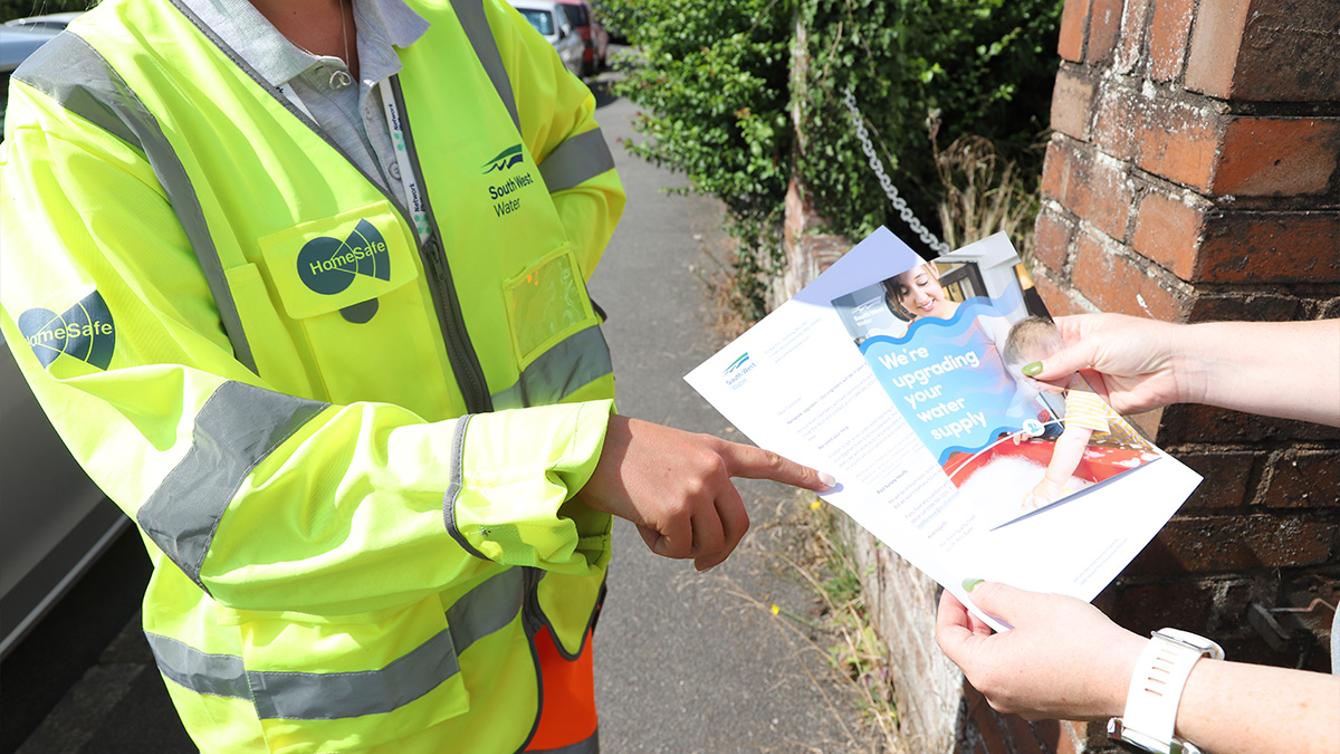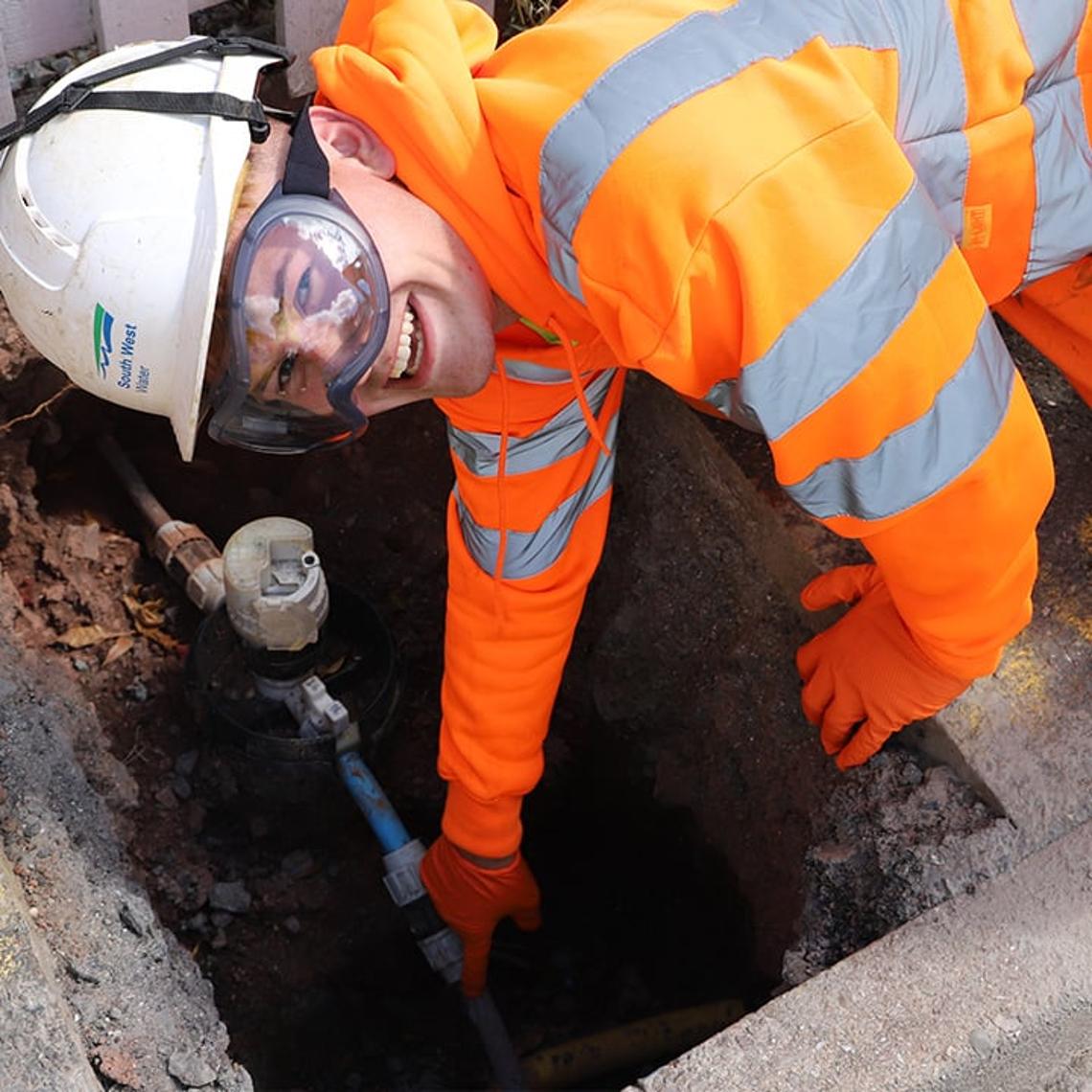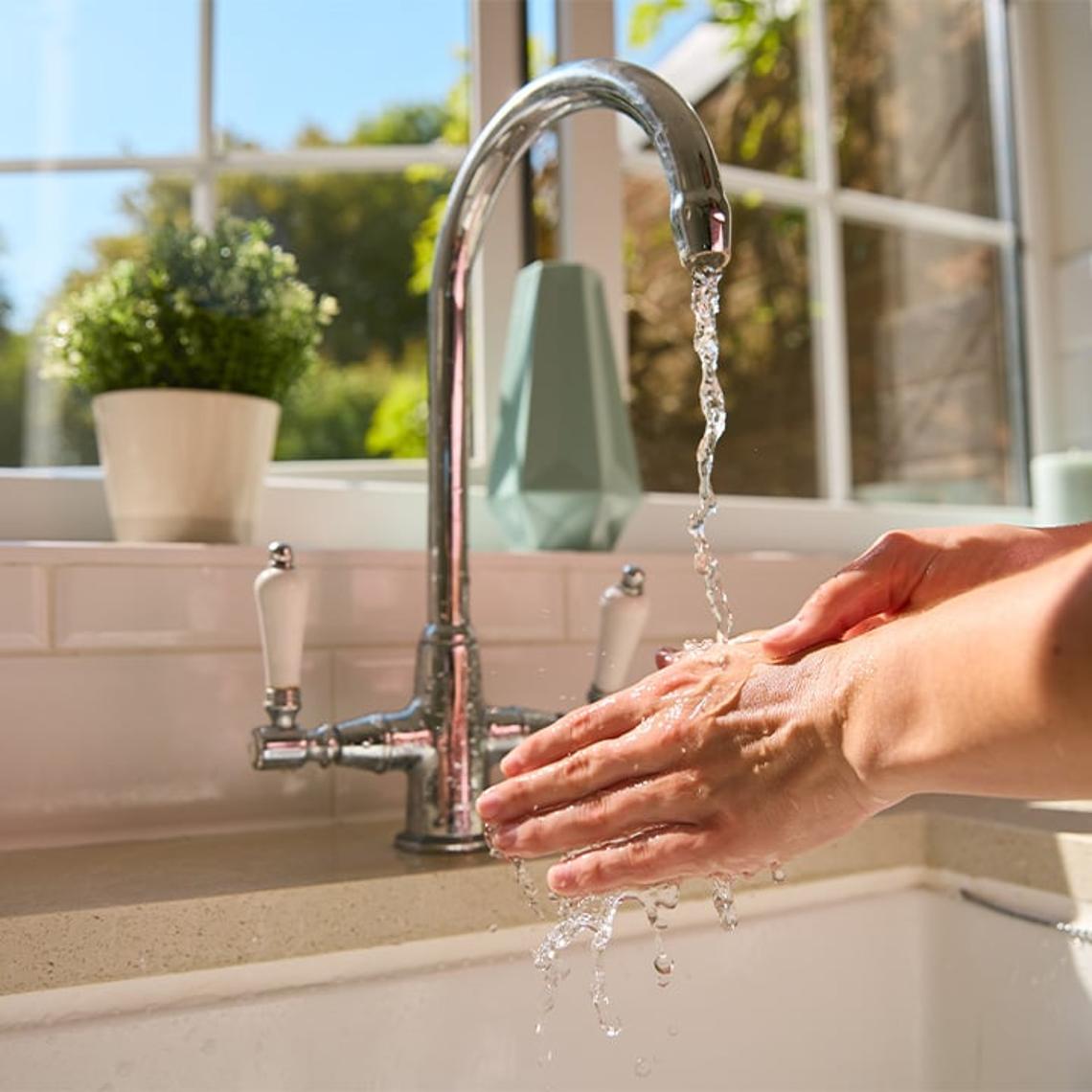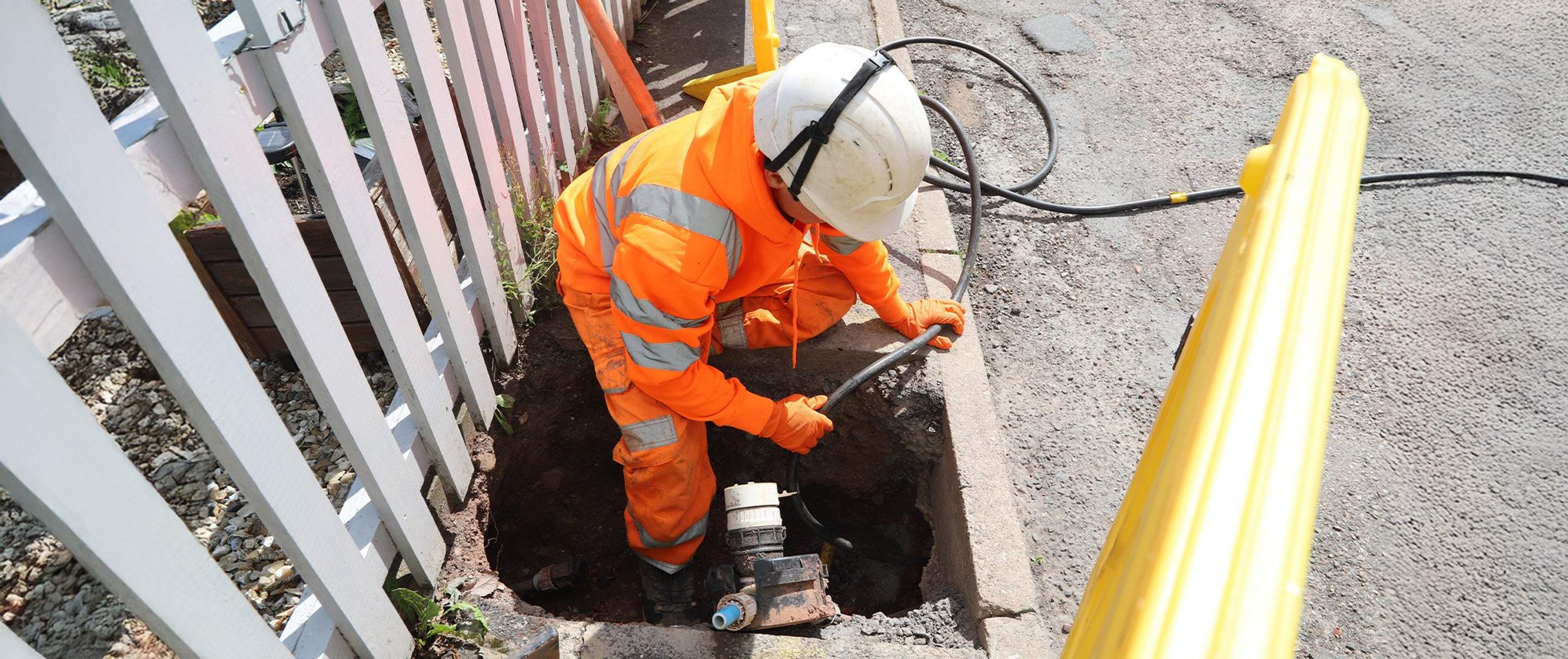
We're launching a major lead pipe replacement programme across the South West.
This work will take place in phases. It's an important step towards our long-term goal of making our water network completely lead-free, ensuring safer and healthier water for all our customers.
How does lead get into tap water?
When water leaves our treatment works, there’s little to no lead in it. However, if your home has lead pipework or fittings, this can lead to small amounts in your tap water.
Before the 1970s, lead pipes were often used for plumbing in homes, either for the supply pipe that connects your home to the water main or inside your property.
If your home was built after 1970, it’s very unlikely to have lead pipes. If it was built before 1970, the lead pipes might still be in place, or they might have been replaced with copper or plastic pipes.
Is lead harmful to health?
Lead is considered a health concern, and it is important to minimise exposure to any sources of lead, including in tap water. Drinking tap water that contains small amounts of lead can allow it to build up in the body and become harmful to health, particularly for pregnant women and young children. For this reason, it’s advisable to replace lead piping.
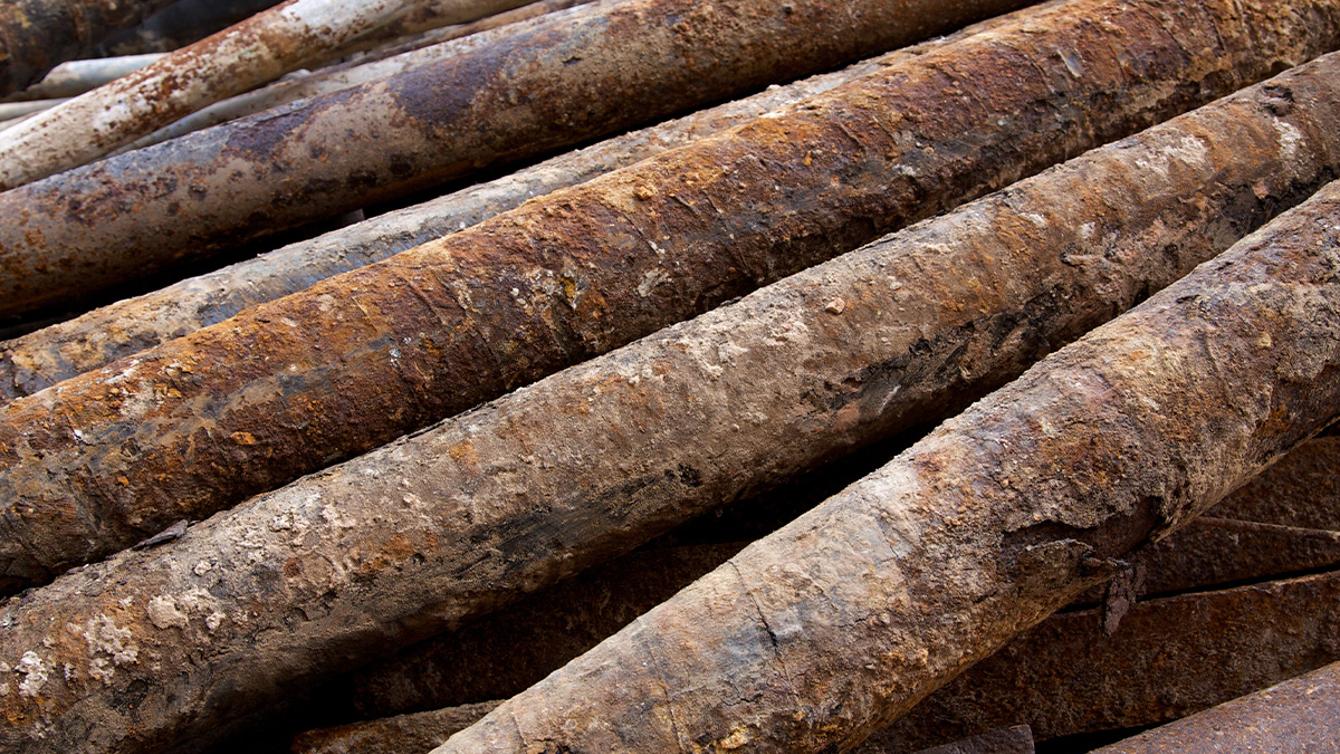
How to spot a lead pipe
Lead pipes are:
- Dull grey colour (if unpainted)
- Scratch easily to reveal shiny silver metal (use disposable gloves if you do this, and avoid inhaling any dust)
- If hit with a metal object, makes a dull thud rather than a ringing sound
- Joints on the pipe may look swollen.
Who is responsible for replacing lead pipework?
We are responsible for the pipes in the road and leading to the boundary of your property. You are responsible for pipes inside your boundary, and the plumbing in your home.
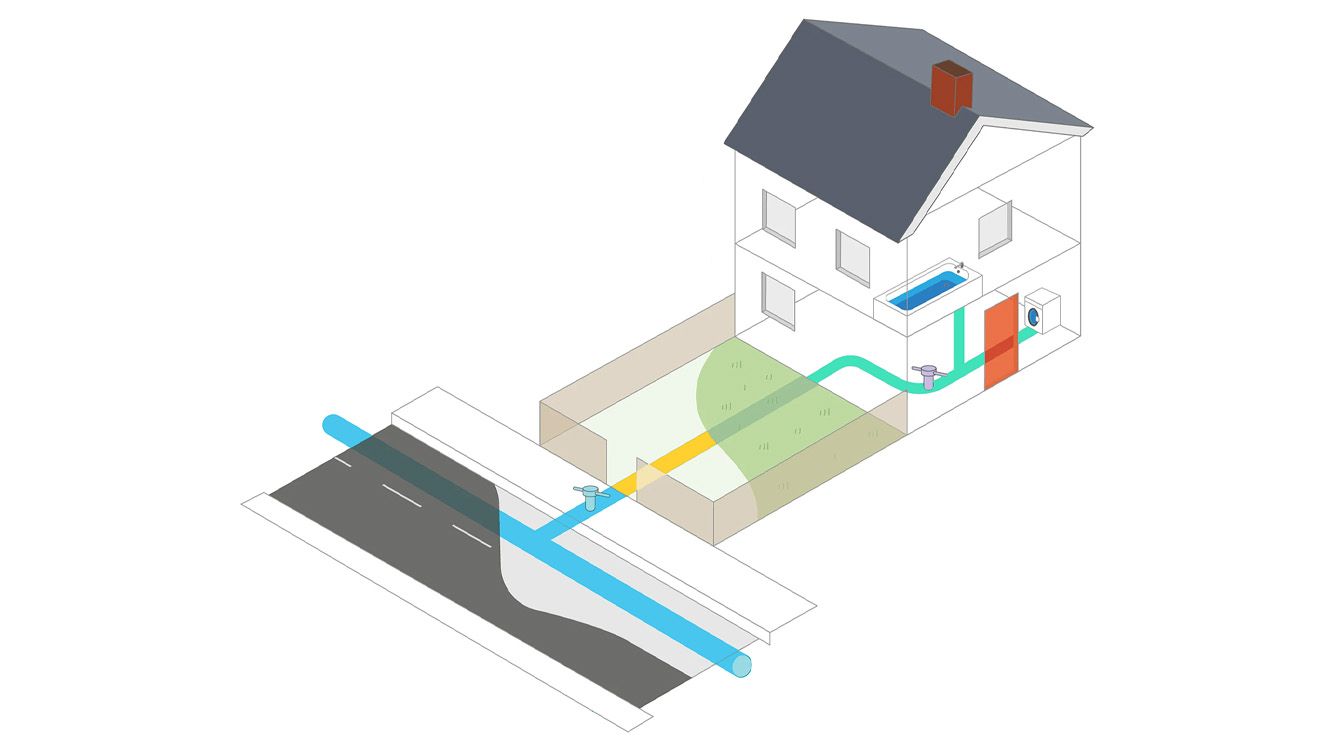
What you can do about lead pipework
You are responsible for paying for the replacement of lead pipes within your home, and the section of supply pipe on your side of the property boundary.
What we’re doing about lead
We add a small amount of orthophosphate to the water supply before it leaves the treatment works. This forms a protective layer inside lead pipes, reducing the amount of lead that dissolves into water.
We want to go further and remove lead pipes from the network. We’ve been making progress on this and aim for the region to be fully lead free by 2050.
If you think you might have lead pipes, call us on 0344 346 2020 or enter your postcode below to see if we’re working in your area, you can then complete the form to arrange a visit. We can test your water and tell you if it contains more than the permitted level of lead.
Who pays for lead pipe replacement?
The property owner (you or your landlord) is responsible for maintaining and replacing supply pipes and internal pipework on private land.
In some circumstances, we can help customers by replacing lead pipework for free. This is less likely to be possible if the replacement would be complex or technically challenging. In a few very limited cases, it might not be possible to replace lead pipes either on our part or your part of the network. If this is the case, we can advise on ways to reduce the risk posed by lead pipes.
Are we replacing pipes in your area?
Use the postcode checker below to see if we are working in your area soon and would like to take part in the lead pipe replacement scheme.
If you cannot find your address please contact us.
